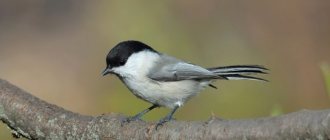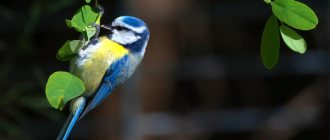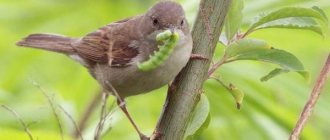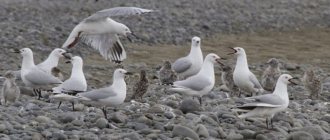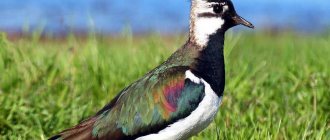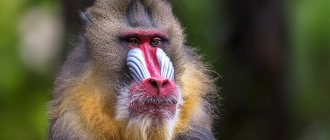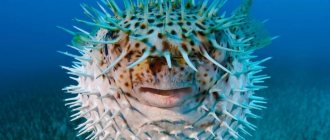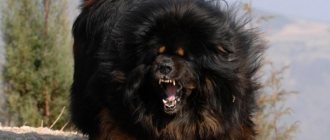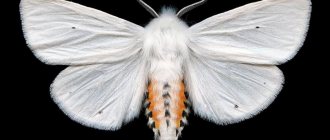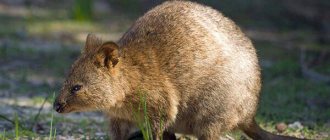,
puffy tit
Parus montanus
is also widely used ) is a small, mobile tit that inhabits the forest zone of Europe and Asia. Unlike its close relative, the black-headed chickadee, it gravitates more towards coniferous forests and for this reason is found in more northern latitudes. It is found less often than other tits in human habitats, preferring remote areas of forest, continuous taiga and overgrown river banks. However, more often than many other tits, they show curiosity about human presence and feed on the remains of human food. Leads a sedentary lifestyle. It feeds on invertebrates and their larvae, as well as plant seeds. Rarely visits bird feeders. It nests low above the ground in hollows of dead trees or stumps, in April - May. She plucks out the hollows herself or uses ready-made ones. The clutch contains 5-9 white eggs with reddish specks.
One of the most common tits. In terms of total numbers, it is second only to the great tit [2] [3], and in central Siberia it is sometimes common and occurs more often than any other bird from this family [4] [5]. The Russian name puhlyak received for the manner of strongly fluffing up its plumage in inclement weather [6].
Until recently, it was considered to belong to the genus of tits ( Parus
), now chickadees are separated into a separate genus
Poecile
.
Description [edit | edit code ]
Appearance [edit | edit code]
A small, densely built bird with a large head, short neck and inconspicuous grayish-brown plumage. Body length 12–14 cm, wingspan 16–22 cm, weight 9–14 g [6]. The top of the head and the back of the head are matte black (but not brown, as can be determined by the name), while the cap extends far back onto the front of the back. The rest of the upperparts - most of the back, shoulders, middle and lesser wing coverts, loin and rump - are brownish-gray. The greater coverts have the same color, but are darker in the middle part. The cheeks covering the ears are whitish. The sides of the neck are also whitish, but have a slight buffy tint. The front of the throat is marked with a large black spot - the “bib”. The underparts are off-white, with a slight buffy coating on the sides and undertail. The beak is dark brown, the legs are dark gray.
In the field, the chickadee is often difficult to distinguish from the black-headed chickadee, from which it can be identified by its matte (rather than shiny black) cap extending far back, a larger black throat patch and a grayish longitudinal stripe on the secondaries (the black-headed chickadee does not have such a stripe). [7]. In addition, the most striking distinguishing characteristic of these two birds is their different vocalizations.
Voice [edit | edit code]
The vocal repertoire of the chickadee is not as diverse as that of its closely related black-headed chickadee [8]. There are two main types of song: demonstrative, which is used to attract a partner, and territorial, to mark the nesting area [9]. The demonstrative song is a series of measured melancholic whistles “tii..tii..tii...” or “tii..tii..tii...” at the same pitch or with an increase in tone [10]. This whistle, performed by a male and female, varies somewhat between lowland and mountain populations, but may include variations of both types. In the alpine belt of the Alps and Carpathians, the singing is softer and longer, consisting of up to seven monotonous syllables. Singing can be heard all year round, but it is most intense from February to the end of spring, as well as in the second half of summer [8]. The territorial song is quieter, similar to a gurgling trill combined with an intermittent squeak [9]. It is more typical for males than for females [10]. In addition to the two main types, a number of ornithologists also highlight the “murmuring” song that a male produces when courting a female [11]. The most common call is the high-pitched “chi-chi” typical of tits, often followed by a rougher and rattling “jae..jee..jee” [8] [10].
Appearance and features
Photo: What does a brown-headed chickadee look like?
This species of bird has a nondescript grayish-brown plumage. The large head is on a short neck. The bird is small in size, but large in build. The upper part of the head, like the back, has black plumage. This color extends from the back of the head to the front of the back. The rest of the back, wings, shoulders, lumbar region and tail are brownish-gray. The brown-headed chickadee has white cheeks.
The sides of the neck are also light, but have an ocher tint. There is a clearly visible black spot on the front of the throat. The lower part of the brown-headed chickadee has a characteristic white-gray plumage with an admixture of ocher on the sides and in the area of the lower tail. The beak, characteristic of these birds, is brown. The bird's feet are dark gray.
The brown-headed chickadee is easily confused with the black-headed chickadee. Its distinguishing feature is a black cap, which is dull rather than shiny in color and a large patch of black with a gray stripe in the feather area. It is also easy to distinguish from the black-headed chickadee by its gait.
Interesting fact: An important distinguishing feature of a bird is its vocalization. Unlike the black-headed chickadee, the brown-headed chickadee has a more limited repertoire. This bird has only 3 types of singing.
Distribution[edit | edit code ]
Area [edit | edit code]
The distribution area covers the forest zone of Eurasia east of Great Britain and central France (the Seine basin, the middle and lower reaches of the Loire) to the Pacific coast and the Japanese islands. In the north it is found up to the border of tree vegetation, reaching forest-tundra - in Scandinavia and Finland up to 69-70° N. sh., the European part of Russia and Western Siberia to the Yenisei to 68° N. sh., east to the 66th parallel.
In the south it reaches a strip of forest-steppe and, in some cases, steppe. In France it occurs up to 46° N. sh., in central Europe to the southern edge of the Alps, the Balkan, Rhodope Mountains and the southern foothills of the Carpathians. In Ukraine, the southern border of the range runs south of the Volyn-Podolsk Upland, through the Kyiv, Poltava and Kharkov regions, in Russia through the Voronezh, Penza, Saratov, Samara and Orenburg regions. To the east, the border passes through Kazakhstan in the area of the 52nd parallel, Karkaralinsk and the Saur ridge, then the Mongolian and Gobi Altai, Khangai, Khentei, the middle part of the Greater Khingan, the northern coast of the Yellow Sea. Outside the mainland it is found on the islands of Great Britain, Sakhalin, Hokkaido, Honshu and possibly the northern Kuril Islands [12].
Habitats [edit | edit code]
Less than other tits, they are prone to anthropogenic landscapes and are rarely found near human habitation. The main biotope is mountain and lowland coniferous and mixed forests with pine, spruce and larch, often deaf, wetlands and floodplains. In Siberia, it inhabits continuous dark coniferous taiga, sphang swamps, and on the northern border of the tundra, willow forests and alder bushes. In the forest-steppe of Southern Siberia it settles among plantings of Siberian cedar. In central Europe it is found mainly in floodplain forests among shrub vegetation, in small groves, and on the edges. In the mountains it is found up to the border of tree vegetation - in Europe on average up to 2000 m, in Altai up to 2300 m, in the Chinese Tien Shan up to 2745 m above sea level. Outside the breeding season, it rises much higher - for example, in Tibet, sightings of puffballs have been recorded at an altitude of 3840 and 3960 m above sea level [8].
Reproduction [edit | edit code ]
The breeding season begins in April - May, with flight chicks appearing in July. Pairs form in the winter in the first year of life and, as a rule, remain until one of the partners dies. During courtship, the male sings and chases the female, both birds shake their wings and arch. Mating is preceded by a demonstrative offering of food, accompanied by the murmur of the male and the calls of the female [8]. It nests in the same area of up to 9 hectares, which it guards throughout the year [13] [14]. The nest is made in a rotten trunk or stump of a dead tree (usually birch, aspen, alder, larch) at a height of up to 3 m above the ground. Often the nest is located very low, at a height of no more than a meter [8]. Like the tufted tit, the brown-headed tit prefers to hollow out (or rather pluck out) the nest on its own, but if that fails, it can use ready-made natural voids or old nests of tufted tits, lesser spotted woodpeckers, or its own, having previously deepened and cleaned the hollow. Less commonly, squirrels are occupied, and only in exceptional cases are artificial nests [8] [11].
Social structure and reproduction
Photo: Brown-headed Chickadee
The breeding season for brown-headed chickadees is from April to May. Birds ready to fly are born in July. These birds find their mate in the first year of life, mainly in winter, and live together until one of the partners dies. During courtship, you may see the male running after the female while both sexes make quivering movements with their wings and also flex their bodies. Before mating, the male presents food to the female and at this time sings his murmuring song.
These birds nest mainly in one area, which is protected all year round. Brown-headed chickadees make their nests at a height of up to 3 meters and build them in the trunks of dead trees or stumps of trees such as aspen, birch or larch. The bird makes the notch itself or uses a ready-made one left over from another bird. Sometimes, brown-headed chickadees use the squirrel's hollow.
Interesting fact: The female sets up and equips the nest. This is a long process that lasts from 4 days to 2 weeks. If it is preceded by poor conditions, the process of nest construction is delayed until 24-25 days.
The egg hatching process takes approximately 2 weeks. While the female prepares the eggs for hatching, the male defends her territory near the nest and also takes care of food. In rare cases, the female herself goes in search of food. Chicks do not appear simultaneously, but one at a time. This process takes 2-3 days. Newborn birds are characterized by sparse brownish-gray down that covers small areas of the head and back. The chicks also have a yellow-brown or yellow beak.
Feeding is carried out by both parents, who can bring food up to 300 times a day. At night, as well as in cold weather, the female warms the cubs with her body and does not leave for a minute. Within 17-20 days after hatching, the chicks can fly, but still do not know how to get their food, so they are still completely dependent on their parents for their lives.
From mid-July, strong chicks, together with their parents, join other birds, forming flocks. In this composition they wander from place to place until deep winter. In winter, hierarchical power is observed in flocks, in which males dominate females, and old birds dominate young ones. This species of bird most often lives in one territory, in rare cases changing its location within a radius of no more than 5 km.
Food [edit | edit code ]
It feeds on small invertebrates and their larvae, as well as seeds and fruits. In summer, the diet of adult birds is divided approximately equally between animal and plant foods, and in winter, up to three quarters consists of food of plant origin, mainly seeds of coniferous trees - pine, spruce and juniper. The young are fed butterfly caterpillars, spiders and sawfly larvae, followed by the addition of plant feed. Adults eat large quantities of spiders, small beetles (especially weevils), butterflies at all stages of development, homoptera, hymenoptera (bees, wasps), hemiptera and diptera (flies, mosquitoes, midges) [20]. It also feeds on lacewings, caddisflies, ants, labiopods, haymakers, mites, earthworms and snails.
It feeds in the middle and lower tier of the forest, including among low-growing shrub vegetation and undergrowth, but rarely falls to the ground. This bird can often be seen hanging head down from a very thin branch. In winter, it looks for sleeping insects in secluded places on tree trunks and needles. It actively makes reserves throughout the year, hiding seeds in crevices of the bark, between the needles, and under lichens. He immediately hides some of the food he finds, even during the winter hungry period. Occasionally visits bird feeders.
Gaichka: natural enemies and population
Such a small, harmless bird, of course, has natural enemies. These include a raccoon, a hawk, an owl, and in general those that are a little larger in size. They eat mainly eggs and young chicks. However, today these birds are not in danger of extinction. Therefore, you can listen to the chickadee singing for a long time.
During the first days, young chickadees receive soft food: spiders, mayflies, and small caterpillars. They leave the nest at the age of 20 days, but adults feed them for another two weeks. Birds feed in the crowns of trees and bushes, carefully searching every twig and leaf. While searching for food, the birds “hang” upside down. In hot weather, when there are many insects in the air, they hunt in the manner of flycatchers, flying up from a branch to catch flies. They make provisions for the winter by hiding seeds in cracks in the bark and tucking them under lichens.
The article was read by 1,255
Taxonomy and subspecies [edit | edit code]
Brown-headed tit under the Latin name Parus cinereus montanus
was first described in 1827 by Swiss naturalist Thomas Conrad von Baldenstein [21].
Until recently, most authors considered all chickadees to be a subgenus Poecile
of the larger genus
Parus
, and the brown-headed chickadee was called
Parus montanus
.
This name is still widely used in the world, however, an analysis of the cytochrome-b gene sequence of mitochondrial DNA, carried out in 2005 by a group of American molecular biologists, showed a more distant relationship of this group of birds to other tits than previously thought [22]. As a result, the American Ornithological Society launched an initiative to bring back Poecile
rank of the genus, as was customary at the end of the 19th century, and the puffball is called
Poecile montanus
[23].
The guide to the birds of the world identifies 14 subspecies of the brown-headed tit [23]:
- P. m.
affinis Przewalski, 1876 - northern and central China (northeastern Qinghai, Gansu, northern Sichuan, Ningxia and southwestern Shaanxi). - P. m.
anadyrensis Belopolski, 1932, Anadyr brown-headed tit - Russian Far East along the western coast of the Sea of Okhotsk. - P. m.
baicalensis Swinhoe, 1871 - Siberia from the Yenisei basin and Altai Mountains east to the coast of the Sea of Okhotsk, northern Mongolia, northwestern (Xinjiang) and northeastern (Manchuria) China, North Korea. - P. m.
borealis Sélys-Longchamps, 1843, northern brown-headed tit - Northern and Eastern Europe from Scandinavia, Finland, the Baltic states and European Russia south to western Ukraine.
Origin of the species and description
Photo: Brown-headed Chickadee
The brown-headed chickadee is also called the little tit, found mainly in the forests of Asia and Europe. This view was first described by the Swiss naturalist Thomas Cornad von Baldenstein. Previously, brown-headed chickadees were considered a genus of tits (Poecile), belonging to the larger genus of tits (Parus).
Video: Brown-headed Chickadee
The Latin name for this species is Parus montanus. However, recently scientists, based on genetic analysis, discovered that the bird is only distantly related to other chickadees. Therefore, American ornithologists propose returning the previous name of the bird, which in Latin sounds like Poecile montanus. The species of brown-headed chickadee is one of the most common among the entire genus, it is only slightly inferior to the great tit.
Interesting fact: In the wild, such a bird lives from 2 to 3 years. According to ornithologists, very rarely this species of bird can live up to 9 years.
On the ground, the typical gait of the brown-headed chickadee is described as a quick step—between a stroll and a hop. Birds move hastily while feeding, often changing direction, sometimes in a single leap. Birds also exhibit a "clattering" or rapid vibration of their feet when feeding, which can help flush away prey and give the appearance of an erratic gait.
Features and habitat of the brown-headed tit
The brown-headed chickadee , also known as the chickadee due to the fact that the bird likes to fluff up its plumage greatly in winter and in inclement weather, has been a member of the tit family for quite a long time, but recently zoologists have separated it into a separate genus, which received an interesting name - chickadee.
There are a small number of representatives of this genus, the most common are brown-headed and black-headed chickadees , the first one will be discussed in this article.
The brown-headed tit lives in dense coniferous forests of Eurasia, Canada, America and the Caucasus, less often in the mountainous regions of the northern hemisphere, the Caucasus Mountains, and the Carpathians. They prefer to live away from humans in remote areas of the forest.
In times of food shortage, it can show curiosity towards people and feed on leftover food. Rarely visits special man-made bird feeders. A very large group of the tit family, second in number only to the great tit.
What the brown-headed chickadee looks like is of interest to many naturalists, because to find their families, you will need to equip an entire expedition into the frozen tundra. All tits, specifically the genus of brown-headed chickadees, are small in size - 12-14 centimeters in length, with a tail (5-6 cm) - 17-20 cm. Body weight is only 10-15 grams.
Most often found with brown plumage of a dark shade, the top of the head is black, the cap extends far back to the back of the head. The neck is white on both sides, and there is a black spot on the throat. The lower part of the plumage and the undertail area has a pale cream tint.
The puffy bird is a singer bird, its vocal abilities are simply amazing. Listening to the singing of these birds is a pleasure itself, despite the fact that their repertoire is not diverse and consists of three variations of “songs”, namely:
- Territorial;
- Demonstrative (performed by both sexes to find a partner);
- Courtship (performed by males during the period of courtship of a female).
Character and lifestyle of the brown-headed tit
Brown-headed chickadees are sedentary birds that nest in late April - early May in hollows and tree stumps at a relatively short distance from the ground.
Unlike other species of tits, brown-headed chickadees prefer to independently, like woodpeckers, hollow out small hollows for themselves, up to 20 cm deep and 7-8 cm in diameter.
Because of their small beak, they are unable to drill into the bark of a young, strong tree, so they choose trunks of dead, rotten trees with dilapidated wood to make their nests. It is interesting that puffy birds are engaged in arranging nests in pairs, which are created in the fall.
During his first year of life, a young male looks for a mate in the nearest territory (about 5 kilometers). If this fails, he leaves his native land and flies to seek luck in the distant regions of the forest. The most favorite trees for brown-headed chickadees are:
On average, this work takes birds about a week, sometimes two. Hollows up to twenty centimeters deep; bark, twigs, feathers, and wool are used to create them. An important distinguishing feature of chickadee nests is that you will never find moss in their hollows, unlike other species of the chickadee genus.
Very rarely, puffballs can settle in ready-made hollows or nests made last year. There are usually six to eight eggs in a clutch; two broods per season are extremely rare.
The very next summer, parents with young chicks join the nomadic flocks, which do not necessarily consist only of brown-headed gigs, but can also include wrens and other birds.
In the fall, the plumes settle down and look for partners to mate with. Some of these flocks continue to wander in winter, sometimes for quite a long time, in search of a better place to live or a mate.
These birds love to hide caches with seeds of various plants, but they almost always forget where they hid the treasure, so in the depths of the forest you can find a large number of such storage facilities.
In the same way, they help new trees grow and increase the area of forests. This means that future generations of puffballs will be able to settle by creating nests in these trees.
Also, brown-headed chickadees are very smart, because when they hollow out a nest for themselves, they will never leave chips right under the tree, moving them to another part of the forest or hiding them between the needles.
Small wooden knots on a white snow bed can give away the location of the nest. The nests left by brown-headed chickadees after wintering serve the next year as a home for other small birds, such as flycatchers or fellow tits.
Brown-headed chickadee feeding
All of the genus of brown-headed chickadees feed in huge quantities on a variety of small insects, in particular invertebrates and larvae. Puffy birds are very useful for forest ecosystems, as they play an important role in regulating the number of various insects.
They help trees get rid of parasites by hollowing out small insects from under the bark. Puffballs also feed on seeds and fruits of plants. In summer, ½ of their diet consists of plants and ½ of animal food.
In winter, ¾ of the diet consists of plants, mainly the seeds of coniferous trees - spruce, cedar and yew. Young chicks like to snack on caterpillars, small spiders, larvae and other small insects, with the further addition of plants. Among plants, grains and cereals occupy a special place in the diet, namely:
They prefer to look for their prey in the middle and lower tiers of the forest, in dense bushes, but they practically do not descend to the ground. In the coniferous forests of Europe you can see a funny picture of birds of this genus hanging upside down on a thin branch, trying to catch some bees.
In winter, they look for insects by hollowing out the bark of trees. As already mentioned, throughout the year they hide a large amount of seed reserves in holes between the bark and trunk of a tree, in bushes. They are wary of people, so they do not approach the feeding troughs, even if they are very hungry.
Reproduction and lifespan of the brown-headed tit
On average, in the first year of life, out of a thousand individuals, about three hundred survive. Average life expectancy is 2-3 years. The longest age to which chubby animals can live in rare cases is 9 years; the same age lives at home. Female brown-headed chickadees lay eggs at the end of May. Sometimes they are placed directly on the bottom of the hollow, on which there is a soft bedding of dry plants, twigs and wood chips.
After the female has lined the hollow, she waits another five to six days, after which she lays from six to twelve eggs at a time, plain white with light red spots. The female plume incubates the eggs for two weeks, during which time the male guards the territory and hunts to feed his mate.
The chicks hatch within two days. For the first few days, the mother does not fly out of the hollow at all, warming the newborn babies; In the bag they stay in the nest for about twenty more days.
It is interesting that the male, while the female is incubating the eggs, carries food two to three hundred times a day. After just a month, the broods begin to fly out of the nest on their own, but the mother continues to feed them for about another week.
After this, the young chicks, together with several old representatives of the genus of brown-headed chickadees, gather in a flock, which a little later unites with flocks of other bird species. Together they begin to travel across the northern latitudes in search of a new nesting site.
Throughout their lives, a pair of chicks creates more than one brood of offspring, carefully caring for the eggs and hatched chicks, which in 18-20 days will have to survive on their own in the conditions of the wild taiga and cold. The life of chickadees is unpredictable and difficult; from large families, only a few survive - the strongest and most adapted to the wild.
The black-headed chickadee is a bird that grows forests
1:502 1:507
Black-headed or grey-headed tit, the northernmost and most frost-resistant of all tit species . It has loose plumage with soft downy feathers, which, like a fur coat, protects it from the cold. This hardened bird inhabits mainly coniferous forests: spruce, cedar, pine, and fir forests. Less common in mixed forests, raised bogs and river floodplains.
1:1190 1:1195
The range of this species is quite large and is located in a narrow strip from Scandinavia through taiga forests to Siberia. There it expands sharply to the south and reaches the borders of the Baikal steppe. In Chukotka, chickadees live in all places where dwarf cedar grows, then the range passes to the northern part of the Alaska Peninsula.
1:1777 1:4
In winter, Grey-headed Chickadees form mixed flocks with Brown-headed Chickadees, Coal Chickadees, Great Tits and Blue Tits. Sometimes they accompany crossbills and redpolls, picking up fallen seeds behind them.
1:404 1:409
In winter, they often migrate to human habitation. Here chickadees can be seen at feeders along with great tits or on deer carcasses in reindeer camps.
1:716 1:721
2:1225 2:1230
FOOD: FOR TODAY AND TOMORROW
2:1284 2:1289
The gray-headed tit is a sedentary bird . She shows amazing affection for certain areas of the forest with an area of 10-20 hectares. The gray-headed chickadee spends the whole day searching for food, moving from tree to tree, flying from branch to branch, scurrying up and down the trunks, grabbing the bark with its tenacious paws.
2:1855 2:4
During the day, she covers a difficult route of 3-5 km, carefully inspects all the cracks, sometimes hanging upside down in search of insects and their larvae. Light weight allows you to stay on even the thinnest branches. In summer, its food consists of various small insects and spiders. In winter, seeds of spruce, pine and various herbs are added.
2:608 2:613
The chickadee, like many other tits, stores supplies for future use . This is a characteristic feature of all species of this genus and is important for survival in the harsh northern winters. The time for storing spruce and pine seeds is spring. The chickadees even have to combine the work of constructing a nest with workpieces. Deftly grasping the open cone, the birds take out the seeds from it with their beaks.
2:1275 2:1280
If there is a lot of food and the chickadee is well-fed, then it hides the excess under loose bark, among lichens and in the cracks of old branches. There are so many such “storerooms” that the housewife often forgets where she placed them. In an hour, a bird can hide about 200 seeds, and in the whole spring about 300 thousand - just remember! If a chickadee has hidden tree seeds somewhere in a rotten stump or at the base of a tree butt, then they will germinate safely. This is how the little bird contributes to the expansion of the forest.
2:2141 2:4
In September - October, chickadees store insects . Birds often steal supplies from each other. By winter, they create reserves of quite impressive sizes, up to 5 kg, although each bird only needs a quarter of these reserves to survive the winter.
2:446 2:451
3:955 3:960
OWN HOLLOW
3:988 3:993
As soon as the forest is filled with spring sounds and smells, and the coltsfoot blooms in the thawed areas, chickadees begin to look for a place for a nest. They settle in hollows, like many tits: they hollow out a new shelter in an old rotten tree or occupy an existing one, clearing it of pieces of rotten wood. More often they settle in coniferous trees - spruce or pine - less often in deciduous trees.
3:1724 3:4
The depth of the hollow is from 100 to 200 mm, and the diameter of the flight hole is only 3-5 cm . Future parents carry dry blades of grass, tufts of wool and moss into the nest. They continue to collect building material even in May - June, when the first eggs are already in the nest. There are only 3 to 6 of them - white, with reddish-brown spots.
3:578 3:583
Each egg, measuring 15-19 x 11-14 mm, weighs 1.2 g and is approximately a tenth of the mass of an adult bird.
3:771 3:776
4:1280 4:1285
500 MEALS
4:1319 4:1324
The incubation period lasts approximately 20 days. At this time, the partner brings food to the hen and continues to feed her even after the chicks hatch.
4:1583 4:4
Eating food is accompanied by a real performance: in the morning the male calls his girlfriend with a quiet song, she begs for food from her lover, while taking the pose of a fledgling asking for food.
4:341 4:346
The chicks hatch naked, with sparse down on the head and back . A caring mother spends most of her time in the hollow, warming her babies. The male feeds the female regularly; this is very important for her, since she almost never leaves the nest. After the chicks' own thermoregulation begins to work, their mother increasingly flies out of the nest in search of food.
4:995 4:1000
Grey-headed chickadees feed their chicks 300-500 times a day. Mainly caterpillars, spiders, wood-boring beetle larvae. Often parents bring grains of sand, eggshells, and land mollusks to the chicks.
4:1354 4:1359
During the period of nesting life (about 20 days), approximately 20-30 thousand different invertebrate animals, with a total mass of about 800 g, disappear into the voracious mouths of the chicks.
4:1643 4:4
5:508 5:513
A DIFFICULT AGE
5:551 5:556
The day comes when the grown chicks, who already know how to fly well, leave the nest. This happens most often early in the morning. The chicks peer through the entrance hole for a long time, gaining courage. When the bravest one decides to fly out, everyone else immediately follows him. At night they return to their hollow house. The young stay together for some time; their excited parents accompany them and continue to feed them until the young chickadees learn to feed on their own.
5:1463 5:1468
6:1972 6:4
A week after emergence, adults and their offspring are a noisy flock. The chicks continue to pursue their parents, annoyingly begging for food. Parents try their best to feed their offspring, who are no longer smaller than adults. Finally, young people begin to feed on their own, leave their homes and sometimes settle hundreds of kilometers away. Young chickadees leave their parental territory, and birds from other broods fly in to take their place—this is how the families mix.
6:910 6:915
By August, autumn-winter flocks are formed. With the onset of frost, the owners of the site condescendingly accept everyone who finds themselves here. However, in the spring they drive away strangers and even their grown children, preventing them from nesting on their territory.
6:1366 6:1371 6:1376 6:1381
Black-headed and brown-headed chickadee: photos and facts
For a long time, these birds belonged to the genus of tits, but recently they were separated into a separate genus - chickadees. There are several representatives of this genus, but the two most commonly encountered are the brown-headed chickadee and the black-headed chickadee.
Both species have striking features and signs that make them easy to recognize, but at first glance it will be difficult for an uninitiated person to distinguish them.
Description of species: black-headed and brown-headed tit
Brown-headed and black-headed chickadees are very similar: they have fluffy gray-brown plumage, reach 14 centimeters in length, the maximum wingspan reaches 22 centimeters, weight does not exceed 14 grams, a very short neck and a large head, the cheeks and neck on the sides are light, almost white. The underparts are off-white, the beak is brown-black, and the legs are gray.
The black-headed chickadee was first described in 1758, the brown-headed chickadee in 1827, and it was from this year that their full study began, as well as the search for the main differences and features characteristic of each species.
Brown-headed chickadees are one of the most common species; they got their second name, chickadee, because they fluff up their feathers greatly in bad weather. They have a matte black cap on the head and back of the head, and there is a spot of the same color on the front of the throat. Brown-headed chickadees are more curious than other representatives of this species.
Natural enemies of brown-headed chickadees
Photo: Brown-headed chickadee bird
Predators of adult brown-headed chickadees are largely unknown, although evidence of adults dying in nests has been found. Many predators of eggs and young have been recorded. Rat snakes are one of the most common predators of brown-headed chickadees. Nest cameras in North Carolina have revealed raccoon, golden mouse, tawny hawk and eastern cutworm destroying the birds' nests.
Video cameras on nests in Arkansas identified the red-headed hawk as a more frequent predator and isolated specimens of owls, blue jays, winged hawks, and eastern cutworms as predators of eggs or young. These cameras also showed one white-tailed deer and one American black bear trampling nests, apparently by accident.
Frightened by predators, adults freeze in the nest and remain motionless for long periods. Incubating females remain motionless until the danger has passed, and the males in the nest will quietly slide away when the danger has passed. Females sit tightly in the nest, allowing predators to approach before flying off; the brown dorsal plumage of the incubating female undoubtedly camouflages the plain white eggs that would be visible against the dark lining of the nest if the female were to leave the nest. Hatching females often allow an approach within a few centimeters.
When the female leaves the nest in the presence of a potential predator, she falls to the ground and flutters like a crippled bird, with her tail and one or both wings drooping, creating soft sounds. This diversion is likely intended to lure predators away from the nest.
Bird's habitat
These birds live in the northern regions of North America, Europe and Asia and lead a sedentary life - they are one of the few representatives of birds that store food for the winter and wander only as a last resort - to search for food in early spring or cold winter.
Throughout their lives, chickadees live in a territory of about 5 kilometers - this small territory is chosen during the bird’s first nesting and is fixed in its memory for the rest of its life. This small area is ideally explored for building nests, searching for food and shelters.
The habitats of brown-headed and black-headed chickadees are somewhat different. The brown-headed one loves coniferous, dense forests; it can easily be found in the taiga or on the banks of rivers overgrown with bushes, where it is almost impossible to meet a person.
Blackheads are often found near villages, cities, towns, but the most suitable for them are deciduous forests or, in extreme cases, mixed forests. Preference is given to low-lying and flat areas with swampy stands where there are many dead trees.
In their common habitat, black-headed chickadees always dominate over brown-headed chickadees and do not tolerate brown-headed fellows on their territory, although sometimes they make exceptions for their solitary representatives in winter.
Where does the brown-headed chickadee live?
Photo: Brown-headed chickadee bird
A distinctive feature of brown-headed chickadees is their habitat preference. This bird species lives in coniferous forests. In this regard, they can often be found in northern latitudes. For their habitat, birds choose dense forests, overgrown river banks and other places remote from people. Despite this, they are very interested in humans and prefer to enjoy leftover human food.
The females sleep in the nest and appear to alternate between periods of sleep and alertness, often turning their eggs during periods of alertness. During the last days of nesting, the female cannot return to the nest to sleep. Away from the nest, the birds apparently spend the night in dense cover low to the ground. They live in areas with dense bushes, green bushes and horsetails at ground level.
Male brown-headed chickadees defend territories from other males during the breeding season. Habitat type and quality, as well as the stage of the breeding cycle, are likely important factors in determining territory size. Territory boundaries with neighbors appear relatively static during the breeding season, but fluctuations in the breeding cycle can influence how much territory or habitat a male will use.
Now you know where the brown-headed chickadee lives. Let's see what this bird eats.
What do these bird species eat?
All types of chickadees feed approximately the same: the main food includes seeds of various plants (for example, juniper and sunflower), tree fruits, small nuts, insects (beetles, larvae, etc.). Due to the fact that their diet includes harmful bugs, chickadees are considered natural healers who help forestry.
In summer they eat plant and animal food, and in winter and spring they eat mainly plant food. In early spring, black-headed chickadees drink the sap of birch, aspen and maple, and in winter they visit feeders located near farmland (although they visit them quite rarely) and, most interestingly, hide the grains found in the feeders in the forest.
Chicks of both species in the first days of life eat exclusively animal food and only over time plant food begins to be included in the diet. The tendency to be thrifty in chickadees appears very early - already at the age of one month. Throughout spring, summer and autumn, birds make continuous reserves for the winter.
In the spring, they store pine and spruce seeds; in the fall, chickadees hide various insects and plant seeds. During the period from spring to winter, one bird makes up to 5 kg of reserves in its habitat (in the bark of trees, cones and other secluded places), although only a third of it is eaten in one winter (quite a lot of reserves are simply lost).
Blue tit
Blue tits come in blue and white. The blue tit species is characterized by a bright blue crown and nape. There are narrow off-white stripes over the beak and eyes, and blue stripes behind the eyes and on the top of the neck. The feathers on the shoulder part of the wings are gray-green, the throat and side of the cheeks are black-blue, the rump is a rich azure color, the belly is bright yellow, and the wings and tail are bluish-green.
The white tit (second name is prince) is a close relative of the common blue tit and is considered one of the cutest tit species. This bird was first described by the famous traveler and naturalist I. I. Lepekhin. The white blue tit is quite rare in the Minsk region, but much more often it can be seen in the Volga region and in the Urals. In Siberia, this bird has a slightly different appearance, but the main color differs slightly.
Socket device
The brown-headed chickadee nests from April to May, and the black-headed chickadee from the end of March. During these periods, the chickadees are very excited, sing a lot, fly, fight for females, and look for a place to nest. Couples last until one of the partners dies.
During the first year of life, young birds look for a mate in the area nearby their home. If a partner has not been found, they leave these places and seek luck in distant areas of the forest.
In the first year of life, out of 1000 individuals, only 300 survive; about 50 birds survive to 5 years, and 3 to 6-7 years, although at home these birds often live up to 9 years.
Nesting of adult birds occurs in approximately one place, in a certain territory, which the male guards throughout the year. New nests are often made by brown-headed chickadees, while black-headed chickadees prefer to use old or other people's hollows.
To make a new hollow, the birds pinch off wood and take it away so as not to give away the location of the nest. Hollows are made in dead or uprooted trees, since living wood is too hard for the fragile and small beak of a chickadee.
Before populating the hollow, it is cleaned and deepened to update it and make it more suitable for the nest. Usually certain types of trees are selected, these include alder, larch, birch, and aspen. It takes up to 12 days to make a new hollow or update an old one. The depth should be about 20 cm.
Different types of chickadees use certain materials to build their nests. Thus, blackheads use moss, wool, cobwebs, feathers, and brownheads use twigs, bark, feathers, wool, and birch bark.
Caring for chicks
Brown-headed chickadees begin laying eggs from the end of May, and black-headed chickadees from the end of March; in one clutch there are up to 9 white eggs with red-brown specks. The size of one egg is approximately 15x12 mm.
For the first 15 days, the female incubates the eggs without leaving the nest, and the male feeds and protects her. The female can leave the nest only in rare cases, if there is no male for a long time to find food for herself. Already in April - May, chicks of black-headed chickadees appear, and in July - brown-headed chickades.
The female and male feed them together, constantly bringing them food. In cold weather, the female stays in the nest with the chicks, warming them, and in warm weather she can leave to get food.
After 18 days, the chicks are able to fly, but still do not know how to get their own food. Over the next 12 days, the male and female teach them how to get food, navigate the terrain, and find a nest.
Throughout their lives, they breed and nurse more than one offspring, carefully caring for them until the chicks are able to survive independently in the wild forest. The life of chickadees is complex and unpredictable; from a large seasonal brood of chicks, only the strongest, those best adapted to the wild survive, and, alas, they are few in number.
